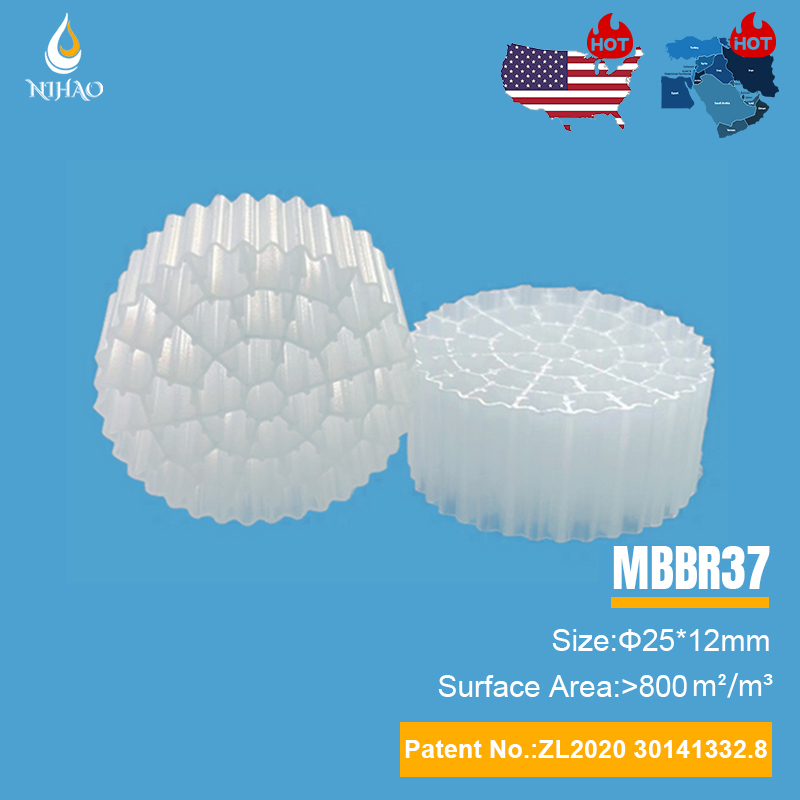 +86-15267462807
+86-15267462807
Selecting an MBBR media type has a profound effect on its biological wastewater treatment efforts, so selecting the appropriate type requires thorough consideration of system design, pollutants being addressed and desired treatment outcomes.
MBBR media carriers are floating plastic pieces designed to provide microorganisms with surfaces for colonization. Their shape and material determine how efficiently they break down waste in aeration tanks.
Material, size, shape and surface properties of MBBR media all play an integral role in its effectiveness as wastewater treatment media. Microorganisms colonize on its surface which forms biofilm to remove pollutant compounds; its size affects hydraulic retention times and mixing efficiency; its surface shape determines aeration effectiveness as well as extent of voidage.
Design and shape of an MBBR bio-media carrier can aid waste digestion by increasing the number of bacteria attached to its media and encouraging its microbial growth. Complex designs of many MBBR carriers allow more surface area per unit media weight compared with standard shapes, providing increased treatment volume per treatment session while simultaneously increasing biological decomposition rates.
Selecting an optimal MBBR media depends on factors including wastewater pollutant type and concentration levels as well as operating and maintenance needs. For instance, if a plant employs an IFAS process it is important to select a medium compatible with this technology.
MBBR media, typically comprised of plastics or foam, features a porous structure designed to maximize oxygen transfer for microbial colonization. Lightweight and energy efficient mixing require minimal energy consumption reducing operational costs further. Furthermore, it resists physical and chemical degradation with its compact design making storage and transportation much simpler.
MBBR media serves as the host environment for microorganisms that breakdown organic matter and extract nutrients from wastewater, promoting its treatment performance. Facility managers must select an ideal media material as it will have an effect on both microbial growth and treatment performance - not to mention hydraulic performance and energy requirements for their plant's operations.
Selecting an effective MBBR media material can help facilities reduce operating costs and meet environmental compliance regulations. A durable yet lightweight material with minimal maintenance needs and strong biofilm attachment properties should be the optimal choice; Nihao offers cost-efficient High density PE MBBR media that meets these criteria.
Density of the MBBR media also matters greatly. Excess or lack of density can have serious ramifications on its process; too much density requires more air for pushing carriers into lower sections of a holding tank while creating higher diffusion gradients that restrict penetration into biofilms resulting in poor removal efficiency.
As part of your MBBR media purchase decision, temperature tolerance should also be taken into account. Different media types have their optimal operating temperature ranges for optimal functioning; some might even work better for certain reactor designs than others. It's also essential to understand expected lifespan in order to plan accordingly for replacement costs and downtime costs.
MBBR media carriers play an essential role in the overall performance of an MBBR system. Their design and materials determine microbial colonization, activity, and pollutant degradation efficiency; some carriers resemble pasta wheel shapes suspended throughout a wastewater tank while others feature thin coin-shaped discs or squares as carriers.
MBBR media carrier shapes are designed to facilitate easy mixing and contact between the carrier and wastewater, and proper suspension within the reactor. Their density should allow for proper suspension within its structure while being chemically inert in order to avoid adverse interactions with either wastewater or bacteria present in the system.
Additionally, for effective biofilm formation on MBBR media surfaces should be hydrophilic rather than hydrophobic to promote efficient biofilm formation. Hydrophobic surfaces require longer wetting times and encourage slower-forming biofilms; while our MBBR media features hydrophilic surfaces that reduce wetting times while encouraging robust and effective biofilm growth.
In the end, a successful MBBR system should provide the ideal conditions for biological treatment and ensure maximum productivity. With proper media specifications in place, an ideal level of productive biofilm will form in the system and reliable wastewater treatment can take place that is cost-effective, user friendly and provides high levels of pollutant removal efficiency.
MBBR media act as substrates for biofilm formation, helping remove organic compounds and nutrients from wastewater. These systems are typically constructed with large surfaces areas to encourage bacteria colony formation for an efficient treatment process. Depending on how a system is designed, choosing between coin-shaped or chip-type MBBR carriers with more surface area or thinner coin-shaped carriers with improved biological activity/permeability balance offers higher performance; however, thin coin carriers may shear during mixing processes, leading to premature wear-and-tear.
For optimal performance, the density of MBBR media should closely resemble that of wastewater. This will ensure it disperses evenly throughout the reactor tank and offers efficient waste digestion. Engineers can use sizing tools to quickly determine an application's ideal density level and select materials to meet this need.
Additionally, MBBR media carriers should be constructed of durable yet lightweight material that makes handling and installation simpler. Furthermore, the media itself should possess excellent resistance to abrasion so as to last longer and require less frequent replacement; Levapor PU foam impregnated with activated carbon is one such long-lived and reliable example.
Still have question on your mbbr media selection? Try contact us direct, we will offer you wholesale mbbr media solution for your project. We are professional manufacturer of mbbr media.